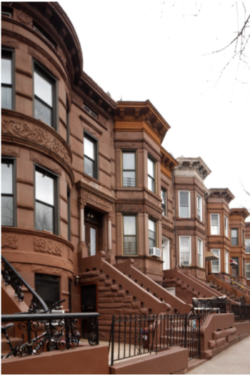
Rowhouses along 50th Street in Sunset Park 50th Street Historic District. Image Credit: LPC.
The four historic districts contain the most cohesive intact concentrations of high-quality architecture in Sunset Park, representing its primary periods of development. On June 18, 2019, the Landmarks Preservation Commission voted unanimously to designate four areas of Sunset Park, Brooklyn as historic districts: Sunset Park North, Sunset Park South, Central Sunset Park, and Sunset Park 50th Street. Sunset Park North, South, and Central Sunset Park Historic Districts are areas where coherent historic streetscapes continue across several blocks and together create a strong sense of place. The Sunset Park 50thStreet historic district contains two complete rows of browstones designed by Henry Spicer and Thomas Bennet and is the most consistent block in Sunset Park. The district boundaries were determined following extensive analysis of over 4,000 buildings between 40th and 60th Streets and 4th and 7th Avenues. Landmarks calendared the districts on January 22, 2019, and held a public hearing on May 7, 2019.
Sunset Park was developed between the 1890s and early 1900s following the industrial development of Sunset Park’s waterfront, particularly Bush Terminal, and the addition of new transportation links to Downtown Brooklyn and the Brooklyn Bridge. The 1889 opening of the 39th Street Ferry to Lower Manhattan and the 1893 extension of the Brooklyn Union Elevated Railway along 3rd Avenue were key to the area’s growth. Neighborhoods of rowhouses quickly emerged to house port workers and professionals many of whom were Irish, German, Norwegian, Swedish and Finnish immigrants. Sunset Park continues to draw immigrants and is now home to many Asians and Puerto Ricans.
Sunset Park was developed in three phases. Many rowhouses were constructed in the late 1890s with brown stone and brick facades and flat fronts or rounded and angled bays. Two-family rowhouses with more ornate elements were constructed between 1901 and 1909 featuring brick or stone facades, projecting round, angled, or flat bays, textured brick detail, carved-stone window surrounds, and decorative cornices. After 1910, larger apartment buildings, flats, and tenements were constructed. Sunset Park’s 19th-century buildings are located closer to 4th Avenue. The buildings constructed after the turn of the 20th century are more prevalent in the blocks between 5th and 7th Avenues.
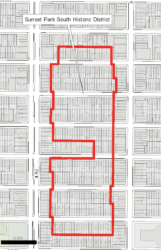
Sunset Park South Historic District. Image Credit: LPC.
Sunset Park South. Sunset Park South is located along 54th through 59th Streets between 4th and 5th Avenues and consists of approximately 285 buildings. Sunset Park South contains some of the area’s oldest buildings and intact rows that capture the early development of Sunset Park and its residential character. Sunset Park South is characterized by brownstone and brick mostly constructed in the 1890s. This historic district is characterized by long rows of similar buildings with similarly shaped bays. The included buildings have only minor alterations. A portion of 57th Street contains buildings with major alterations and scales that are not consistent with the historic character of the surrounding streets and was not included in the district, prompting comments from two of Landmarks’ Commissioners at the vote for designation. Commissioner John Gustaffson asked why two buildings that are separated from the rest of the block but have only minor alterations were not included in the district. In response, someone on Landmarks staff pointed out that the buildings with the major alterations are from a different time period and typology and interrupt the context and continuity of streetscape.
Michael Goldblum remarked that while there is a logic to excluding heavily modified areas when considering designations in order to ensure cohesiveness and continuity, there may also be logic to balancing that with the sense of place and sense of neighborhood. Goldblum said that including buildings that are considered “non-contributing” is important because they are part of a continuous streetscape that is perceived as part of the place. Carving out areas, as the historic district does here, will ensure that the carved out area remains different from its surroundings making it open to development opportunities that can further exacerbate its oddness.
Chair Sarah Carroll responded that she agreed that there has to be a balance. However, in many districts, the sense of place is characterized by variety and not cohesiveness. “This particular district is about residential building typology with streetscapes primarily of rowhouses,” said Carroll.
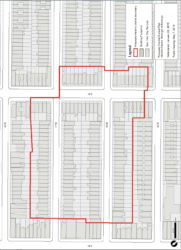
Central Sunset Park Historic District. Image Credit: LPC.
Central Sunset Park. Central Sunset Park historic district is comprised of approximately 148 buildings along the north and south sides of 47th and 48th Streets between 5th and 6th Avenues, and along the east and west sides of 6th Avenue, between 47th and 49th Streets. The buildings were all constructed between 1897 and 1906 and are an outstanding representation of the turn-of-the-century architecture. The Central Sunset Park Historic District is also home to a church located along 6th Avenue and 48th Street that was built in 1921. The rowhouses are predominantly two stories and basement, with high stoops and original iron railing. The rowhouses are clad in brick, limestone, brownstone or a combination of materials. The streetscapes feature consistent cornice lines, rounded and angled bays, and elaborate carved ornament.
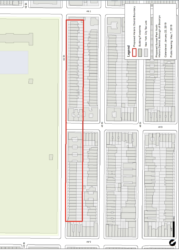
Sunset Park North Historic District. Image Credit: LPC.
Sunset Park North. Sunset Park North is comprised of 56 buildings constructed in the first decade of the 20th century and located on two well-preserved blocks along 44thStreet, between 5th and 7th Avenues. This historic district is most notable for its location overlooking Sunset Park and contains a unique row of limestone-fronted houses and one of the neighborhood’s most intact and consistent blocks of brick, flat-fronted rowhouses designed in the Renaissance Revival style. Four Apartment buildings, designed in 1913 and 1914 by Eisenla & Carlson, are located at the corner of 6th Avenue and 44th Street. The Sunset Park North Historic District is also home to an intact row of 29 brick rowhouses located east of 6th Avenue. These houses were all built in 1903 and designed by William Kay, featuring shallow projecting rectangular bays, ornamented cornices, and inset brick panels. This row is one of the most intact rows of this type in the neighborhood.
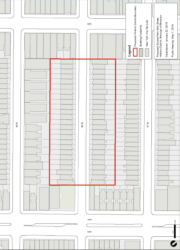
Sunset Park 50th Street Historic District. Image Credit: LPC.
Sunset Park 50th Street. Sunset Park 50th Street contains two rows of 25 houses on 50th Street between 4th and 5th Avenues that were constructed between 1897 and 1903. The two rows are notable for their well-preserved and consistent brownstone-fronted houses designed by Henry Spicer and Thomas Bennet. Landmarks Chair Sarah Carroll noted that this is the most cohesive street in the area.
By: Viktoriya Gray (Viktoriya is the CityLaw Fellow and New York Law School Graduate, Class of 2018).


Links to the maps in the article would be extremely helpful.
Thank you for your comment. Links have been added under each historic district photo that will bring you to Landmarks’ website where you can see larger photos of the district boundaries for each of the new historic districts.